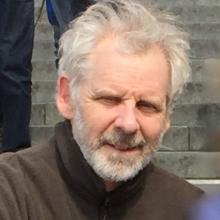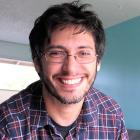As the country prepares to commemorate the 16th anniversary of 9/11, a team of Forensic engineers at the University of Alaska Fairbanks are busy putting the final touches on their two year $300 K, WTC 7 Evaluation. The forthcoming study is focused on showing why World Trade Center Building #7, a 47 story high rise, not hit by an airplane on 9/11, was able to fall to the ground in less than seven seconds at near free fall or constant acceleration for the 610 foot ride to the ground.
It turns out that most Americans will in fact be interested in this study, as an April 2016 Rasmussen poll found, “Americans doubt they’ve been told all the facts about the September 11, 2001 terrorist attacks on the United States and strongly believe the government should come clean.” Over 60% of Americans, the poll found, believed that the truth about 9/11 has been withheld by our government, a number similar to a January 2017 poll on the number of Americans worried about climate change.
In their official WTC 7 Report released seven years after the event in 2008, the National Institute of Standards and Technology (NIST) determined that the WTC Building 7 collapsed due to office fires, a feat unprecedented in the 130 year history of steel framed high rises, until 9/11. Yet, to the consternation of those interdisciplinary building professionals eager to review the modeling data backing up their progressive collapse theory, NIST never released it to the public, claiming the information “would jeopardize public safety”. It took a high school physics teacher David Chandler to successfully force NIST to admit that Building 7 did in fact exhibit free fall it had initially denied. Since then, hundreds of engineers have put their reputations on the line, agreeing that in fact constant acceleration actually disproves NIST’s theory of progressive collapse.
Dr. Leroy Hulsey, chair of the Civil and Environmental Engineering Dept at University of Alaska Fairbanks, presented the findings and conclusions detailed in his UAF team's September 2017 Progress Report, live-streamed on September 6, 2017 for viewers across the country and around the world. A draft report of the study will be issued in mid-October, to be followed by a six-week public comment period allowing for input from the public and the engineering community. The final report, which will incorporate constructive comments and be vetted by peer reviewers, will then be published in early 2018.
The following week, on September 11, 2017 (1PM eastern), live-streamed from the National Press Club in Washington, D.C., the “Bobby McIlvaine World Trade Center Investigation Act” will be unveiled. Named after Bobby McIlvaine who was tragically killed on 9/11 while entering the North Tower, the Act sets out to empanel a select committee in either chamber of Congress to reinvestigate the WTC destruction. Over the following 2 days, Architects and Engineers for 911Truth will hand-deliver the Bobby McIlvaine package to all 535 members of Congress, and then work to assemble a bi-partisan group of sponsors and have the resolution introduced by next year’s September 11th anniversary.
The presentation will be made by Bobby’s father, Bob McIlvaine, and Richard Gage, founder and CEO of AE 911Truth. They will also be joined by former 14 year NIST researcher Peter Ketcham, who has stepped up to provide a timely and eloquent inside perspective on the NIST reports of both the Twin Towers and Building 7. I highly recommend this 1/2 hour documentary out last spring; Stand for the Truth: A Government Researcher Speaks Out ; 9/11 Evidence and NIST.
Sharing this material with my NESEA, AIA and USGBC colleagues over the last 2 1/2 years, I am pleased to add this article which further explores the many parallels between climate change and 911 forensics; Leadership in Whole Systems Thinking. Coming to grips with the science behind the events of 9/11 has all the familiar traits of accepting the sobering science of climate change. By facing the difficult implications that arise from 9/11 science head on, we as sustainably minded building professionals can engage the familiar whole systems thinking critical in addressing the climate crisis. This awakening and understanding begins with speaking truth to power, so important now across this polarized nation and our expanding global community.
Our Mission
NESEA advances sustainability practices in the built environment by cultivating a cross-disciplinary community where practitioners are encouraged to share, collaborate and learn.





Add comment